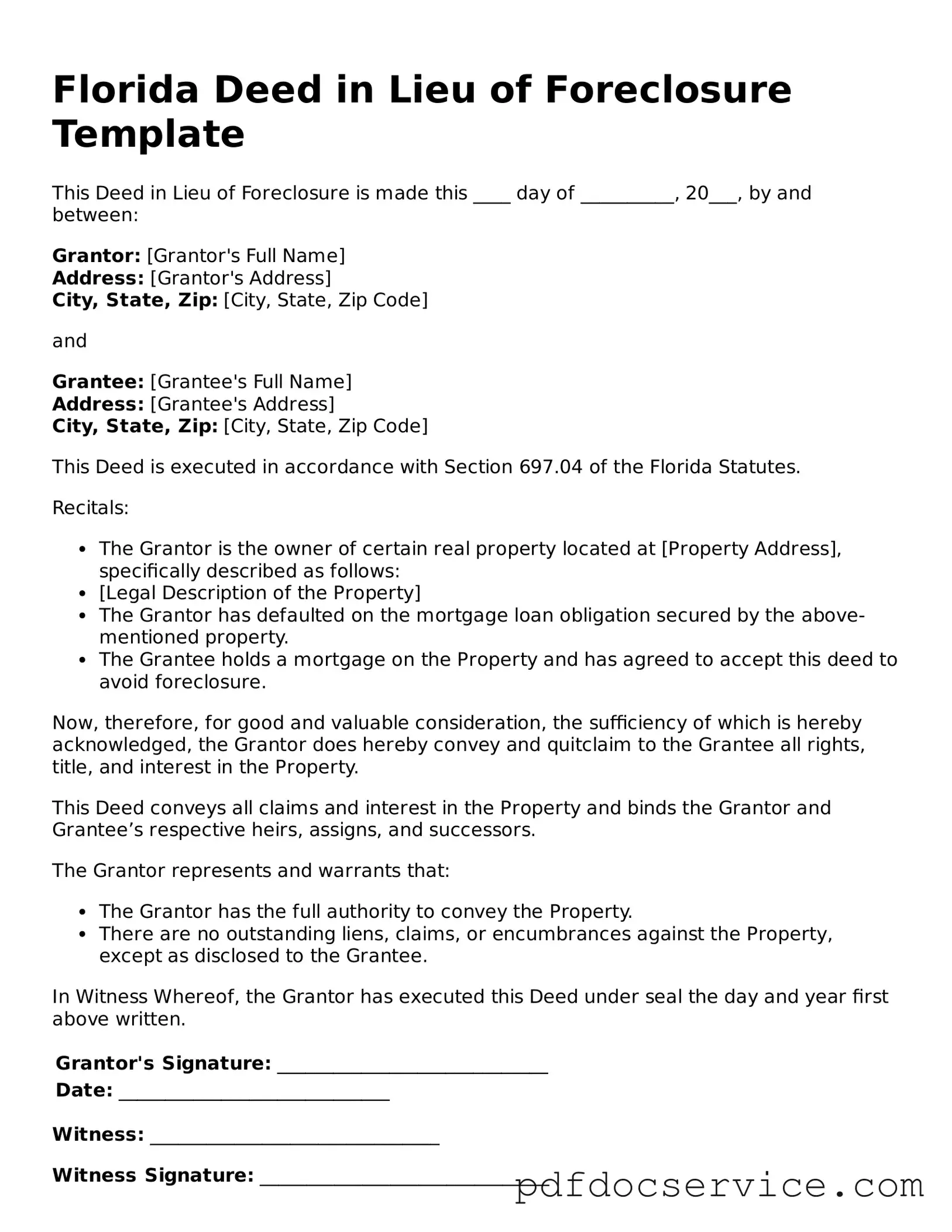Printable Deed in Lieu of Foreclosure Template for Florida
A Deed in Lieu of Foreclosure is a legal document that allows a homeowner to transfer the ownership of their property back to the lender to avoid the lengthy foreclosure process. This option can provide a more streamlined resolution for both parties involved, often alleviating some of the financial burdens associated with foreclosure. Understanding the implications and processes surrounding this form is crucial for homeowners facing financial difficulties.
Open Deed in Lieu of Foreclosure Editor
